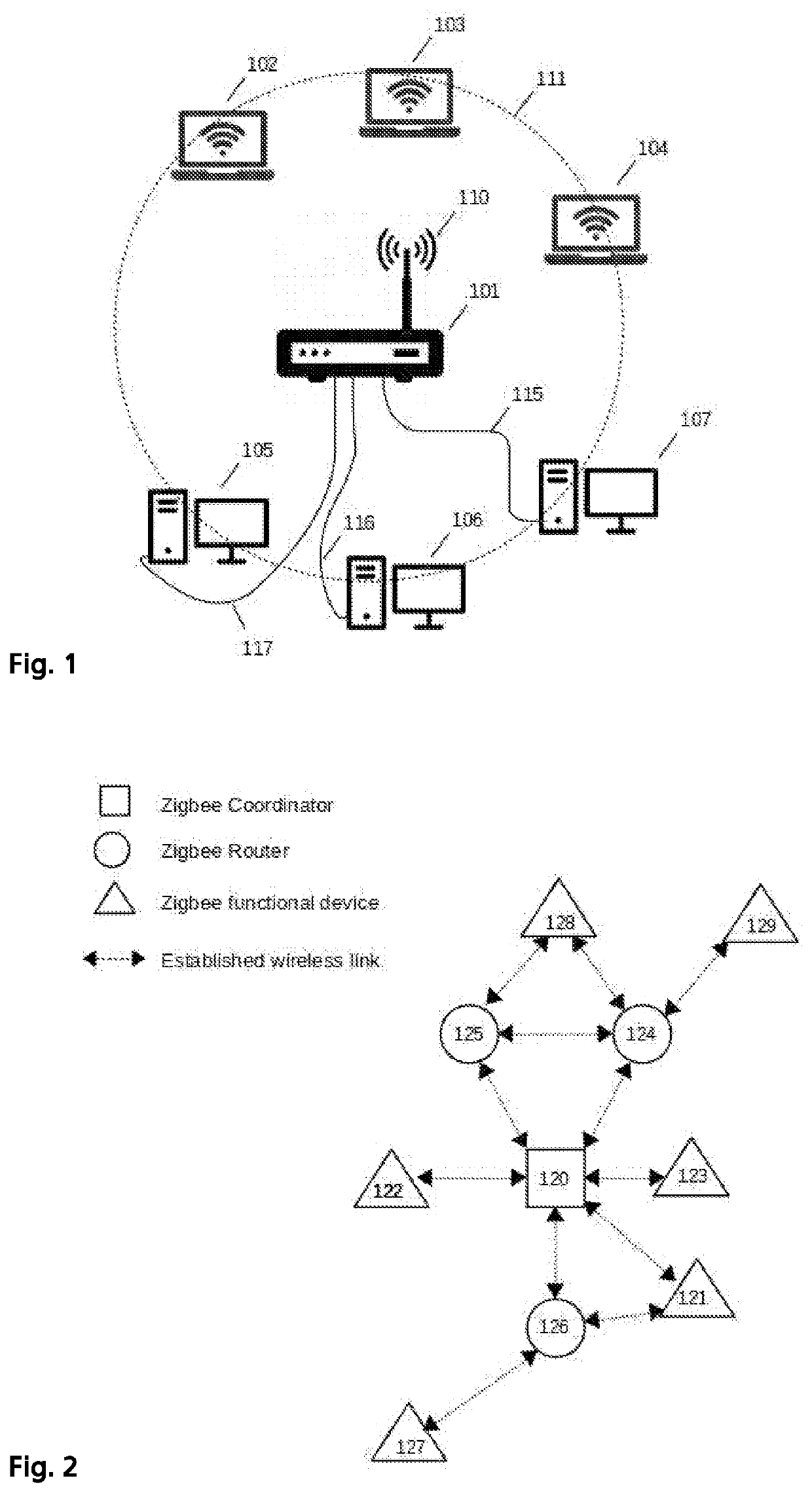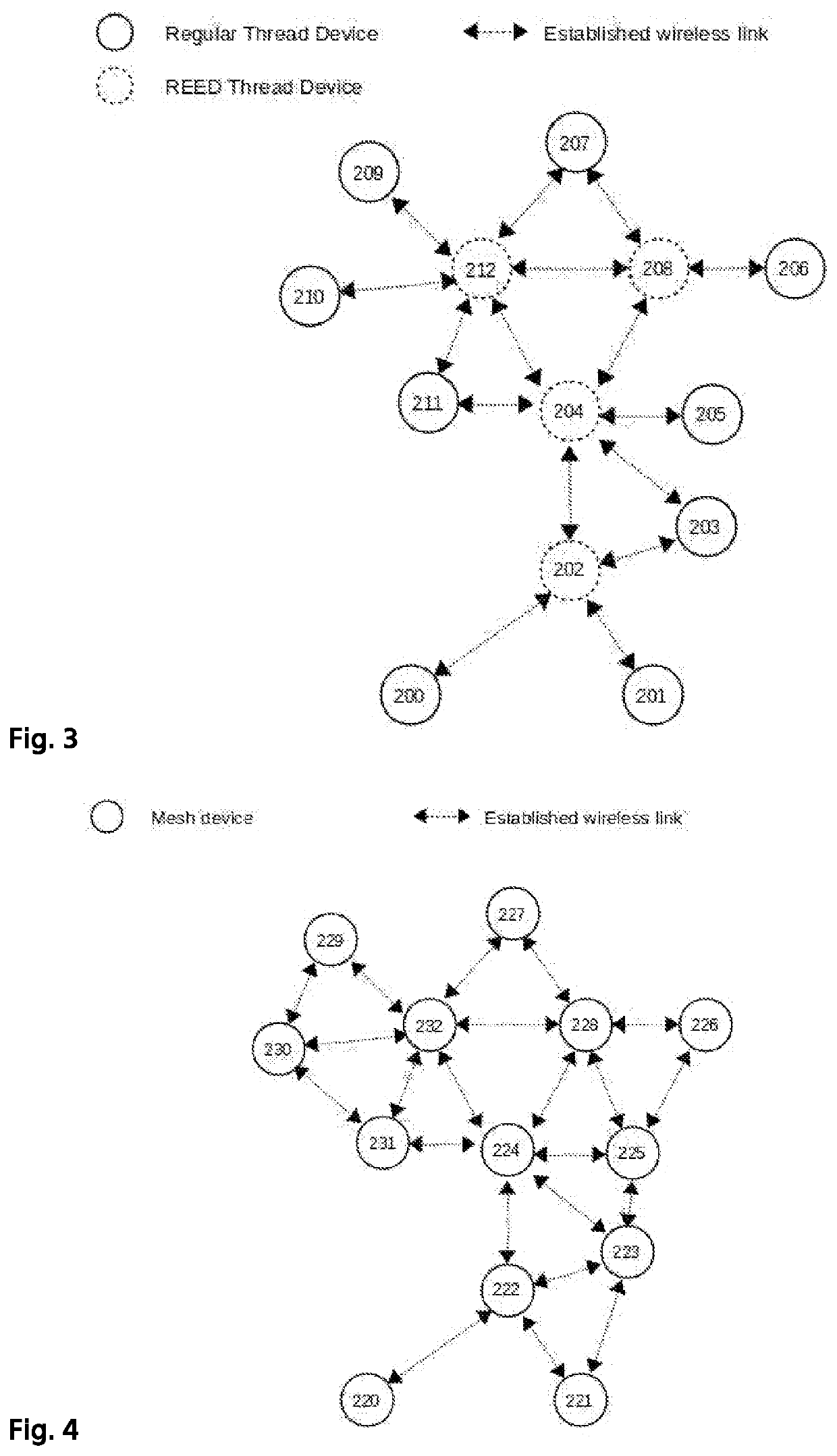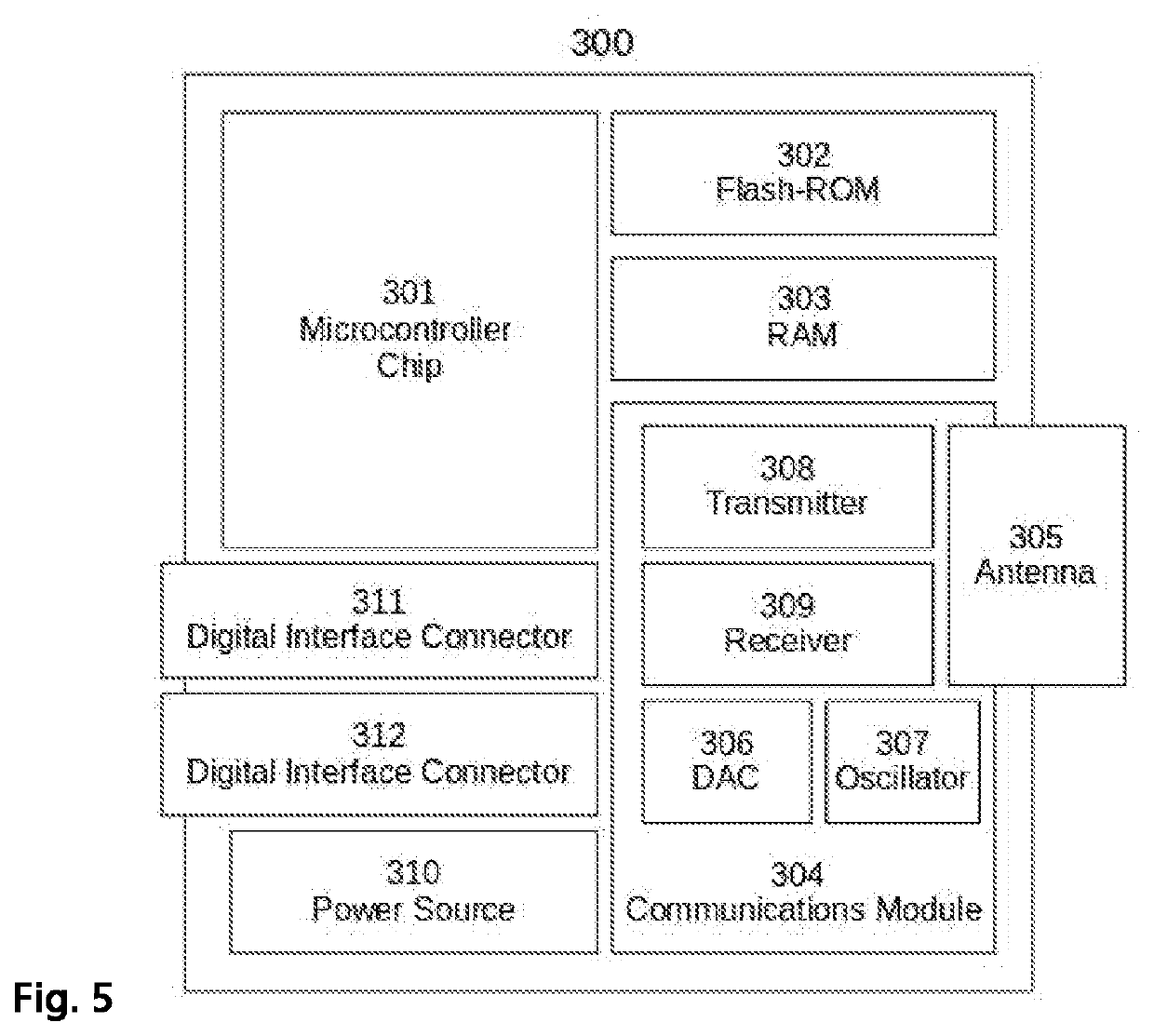An ad-hoc network
a technology of ad-hoc networks and networks, applied in the field of ad-hoc networks, can solve the problems of ad-hoc network setup, notably insecure wps pairing of devices, and more difficult setup and configuration
- Summary
- Abstract
- Description
- Claims
- Application Information
AI Technical Summary
Benefits of technology
Problems solved by technology
Method used
Image
Examples
system embodiment
A. Homogeneous Peers
[0120]In a preferred embodiment, the system and methods and processes of this Invention described herein shall all be executed by peers which are communicating computing devices, defined as being constructed of or embodying a minimal set of components and parts as described hereunder, and which are functionally equivalent, and which are all capable of executing the sequence of actions set forth in the invention described hereunder in the exact same manner. All such communicating computing devices may have the exact same complete set of methods described in the invention and recorded in their permanent or non-volatile memory subsystems during manufacturing. All such communicating devices must be also capable of executing and performing all of the actions, computations, and calculations prescribed by the computer implemented methods described hereunder in the sequence prescribed in said methods.
A.1) Communicating Computing System
[0121]Those skilled in the art will ...
PUM
 Login to View More
Login to View More Abstract
Description
Claims
Application Information
 Login to View More
Login to View More - R&D
- Intellectual Property
- Life Sciences
- Materials
- Tech Scout
- Unparalleled Data Quality
- Higher Quality Content
- 60% Fewer Hallucinations
Browse by: Latest US Patents, China's latest patents, Technical Efficacy Thesaurus, Application Domain, Technology Topic, Popular Technical Reports.
© 2025 PatSnap. All rights reserved.Legal|Privacy policy|Modern Slavery Act Transparency Statement|Sitemap|About US| Contact US: help@patsnap.com



